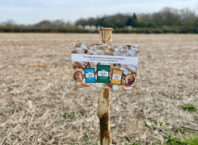Relationships have been under the spotlight since the pandemic began, many have blossomed under lockdown, but many have broken down. Some couples may have felt they had little choice but to tough it out if things were a bit rocky, but for others the stress was too much and they moved on, we also saw a new form of pandemic relationship emerged where people were setting up home together in record time. Here psychotherapist Noel McDermott looks at relationships, addressing toxic characteristics and unhealthy symptoms, whilst offering advice on how to have a healthy and successful connection post pandemic.
Psychotherapist Noel McDermott comments:
“As we move into a post pandemic world over the next few years, it’s time to have a bit of a Love MOT to see how things are. How do we know it’s time to move on or if we can repair and improve our relationships? Knowing the difference between the two is important and it is vital in any intimate relationship to know what your bottom lines are which would then trigger you into moving on”.
When is a relationship toxic? Coercion, control and/or violence.
These are not just toxic characteristics but are also illegal. Under no circumstances is this okay and if this is happening to you it’s time to move on and get the police involved. Never allow yourself to tolerate these behaviours and don’t allow hostage taking by the perpetrator in your life. Seek help immediately as this is very dangerous.
There are other indicators of toxicity in relationships, and they cluster around a number of issues:
- Love bombing: Where one is given almost intoxicating signals of love from another. Always the person doing the bombing has profound difficulties around maintaining healthy vulnerability and intimacy. They will hide these deficits in overwhelming you with signs of being the special one. They may also have issues around hyper-sexual behaviours which act as a compensation for the inability to love.
- Living in the past, childhood or adult abuse and trauma: This may lead to a situation we call trauma bonding where we form overly intense attachments around our shared damage or around a partner’s damage which leads to enabling compensatory adaptations to borderline behaviours, making those behaviours acceptable in the relationship rather than healthier boundaries that encourage us to seek help with the trauma and deficits.
- Co-dependency and lack of ability to hold adult responsibility: There needs to be two (or more in polyamory) adults taking equal responsibility if a relationship is going to have any possibility of working. Role boundaries will no doubt emerge based on each person’s skills, interests, and the needs of the relationship, but all will be of equal value. The refusal of one person to take responsibility for themselves is a serious sign of toxicity and the need to move on.
- Substance misuses or alcohol abuse: If the using partner cannot see they have a problem, are not actively working on getting the help and that help isn’t obviously bringing positive change, then it’s time to move on. All three conditions need to be in place, acceptance of the problem, help seeking and positive change.
- Gaslighting, borderline behaviours(hostage taking, emotional abuse, extreme of mood change, self-injurious behaviour etc): Also, key signals of toxicity and indicate you need to move on.
The Difference Between a Bad Relationship & A Toxic One
Generally, the difference between a bad relationship, one that does not meet your needs and often your partners needs too and a toxic one, is that a bad relationship will make you unhappy and unfulfilled, but it won’t leave you with potentially permanent psychological scarring. The red flags mentioned above make toxic relationships relatively easy to spot apart from the human factors of emotions and rationalisations. Because we can feel love towards someone who is toxic to us, we will often then create rationalisations to explain why they are not as bad as all of that. Also, the toxic partner will often engage in strategies that make the victim dependant and self-blaming. These grooming strategies are well known but often centre on isolating the victim from support and others that might challenge the rationalisations to the toxic abuse. The key to seeing if a relationship is toxic is getting an outside opinion, probably from a professional.
The key point about a toxic rather than bad relationship is that the toxic relationship can only be ended, never repaired. A bad relationship can be repaired depending on a number of factors but attempting to make that repair (whether successful or not) won’t lead to more psychological damage. Attempting to repair a toxic relationship is both futile and potentially very damaging as a process.
Healthy Love
The keys to a healthy and successful relationship are well known and they fall into three areas of functioning, it comes from the global assessment of relational functioning (GARF)
- Problem solving: not just dealing with conflict when it arises but also how effective one is at letting go of conflict that is not helpful.
- Ask yourselves – Is the ’structure’ of the relationship clear? Are boundaries understood? Are tasks allocated fairly? Is power shared appropriately? Are roles adopted with personal autonomy?
- Is the emotional climate and feelings towards each other generally in the arena of love and positive regard, are positive views held by members about being in the relationships? Is sexual functioning healthy and positive?
Dealing with Life’s Challenges Together
It’s important in any intimate relationship to understand stressors from outside that cause issues but don’t necessarily mean the relationship is bad. Learning to distinguish between if you like this inside and outside of the relationship in terms of problems is very helpful in maintaining healthy love towards each other. It’s about normalising stress responses to stressful life experiences rather than saying they are signs of danger or problems. The pandemic of course has and is a significant external stressor because it has disrupted every routine we had In place to manage our work and lives and it continues to have significant impacts.
External circumstances can challenge the perception that our current love relationships are not meeting needs effectively in this area and this can cause a sense of internal stress. It’s perfectly normal, it doesn’t mean that the love relationship is bad, it means the circumstance it exists in are bad.
Psychotherapist Noel McDermott comments:
“Life can and does hurt us and that’s an important thing to accept. Relationships that have managed to make this boundary distinction between outside and inside, learned to accept and forgive the vulnerable humanity in each other, that have realistic expectations of what is possible during tough times, that have fundamentally maintained a ‘background noise’ of love and tolerance for each other will have survived and grown from these times. That’s not a promise that your relationship will last ’till death us do part’, but a promise that you’ll deal with life’s challenges much better together and if you do part, you’ll deal with that better as well.”
Noel McDermott is a Psychotherapist with over 25 years’ experience in health, social care, and education. He is the founder and CEO of three organisations, Psychotherapy and Consultancy Ltd, Sober Help Ltd and Mental HealthWorks Ltd. Noel’s company offer at-home mental health care and will source, identify and co-ordinate personalised care teams for the individual.




